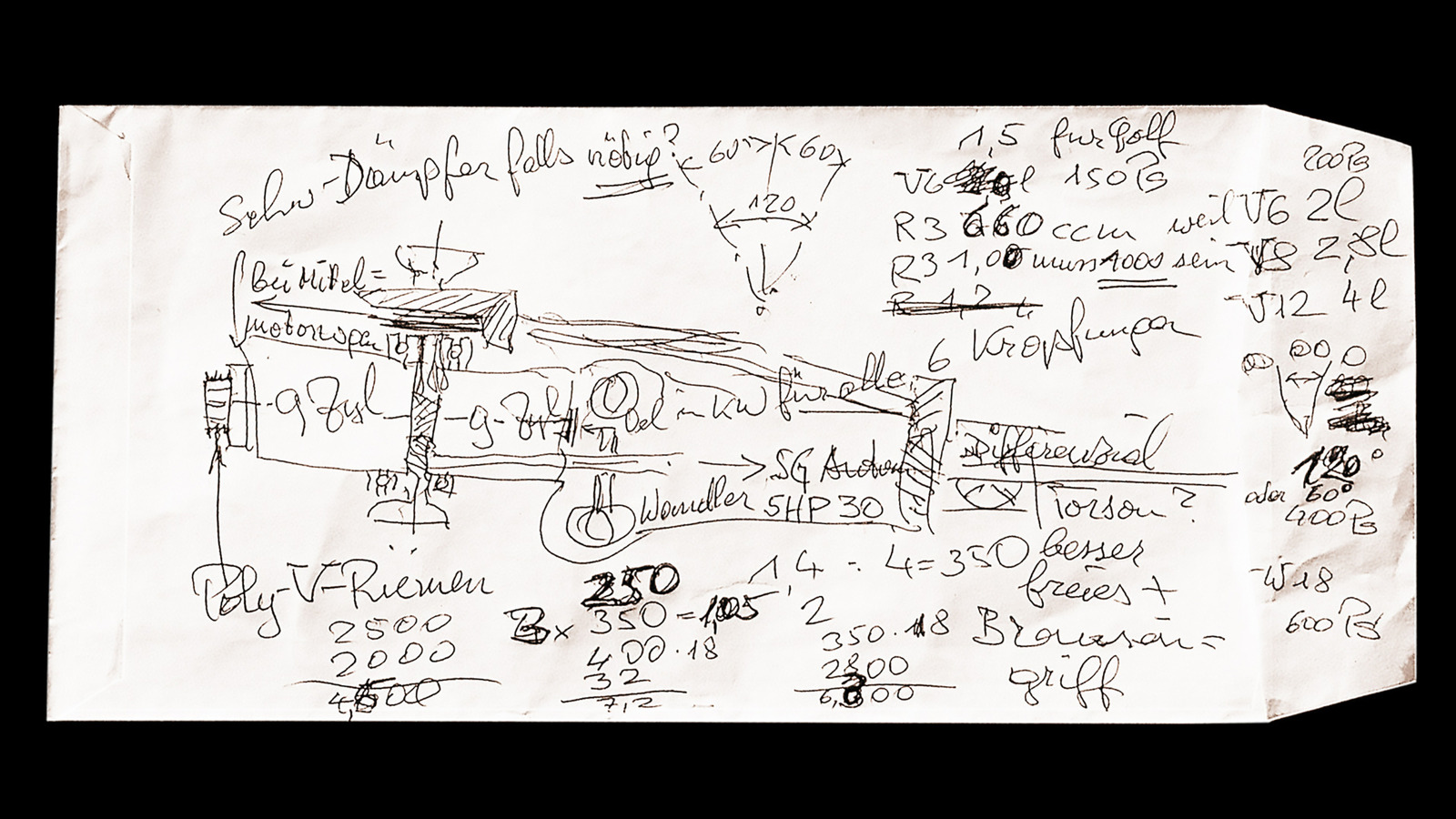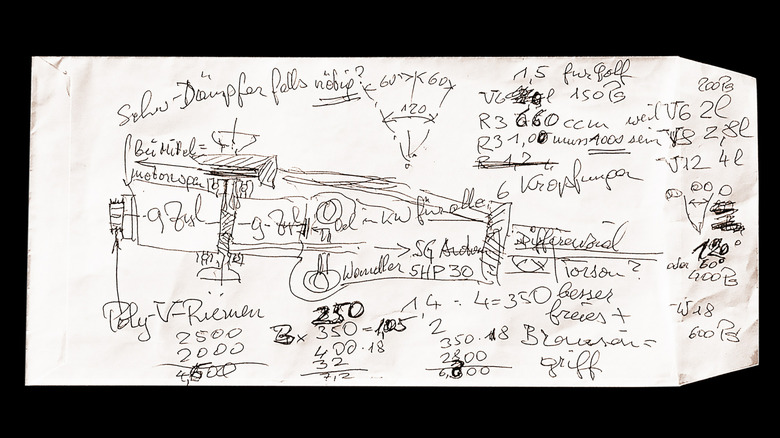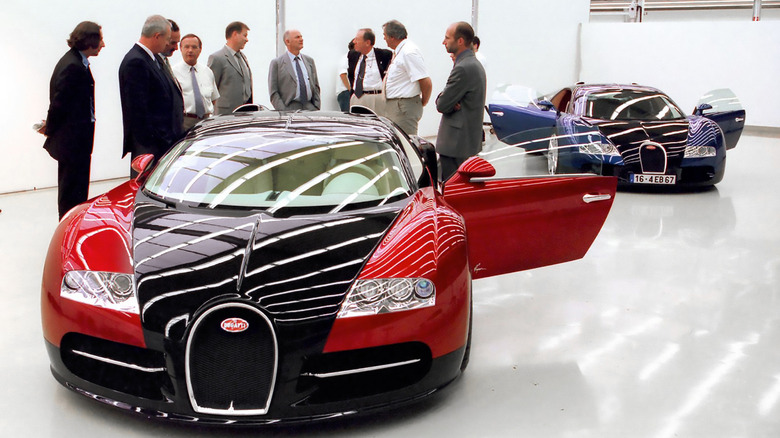Last week would have marked Ferdinand Piëch‘s 88th birthday, and to mark the occasion Bugatti put out a release telling the fascinating story of how Piëch resurrected the brand and created the greatest engine of all time. A brilliant engineer, Piëch was heavily involved in the development of iconic cars like the Porsche 911 and 917, and later at Audi he was essential to the creation of the brand’s Quattro all-wheel-drive system, five-cylinder engine and TDI diesel technology. But it was during his tenure as CEO of the Volkswagen Group, a position he held from 1993 to 2002 (and remained chairman of the board for another thirteen years thereafter), when Bugatti was reborn and changed the automotive landscape forever.
In 1997, Piëch was on the Japanese Shinkansen bullet train with VW’s head of powertrain development Karl-Heinz Neumann when he brought up his idea for a ground-breaking W-shaped eighteen-cylinder engine, something that had been swirling around in Piëch’s head for years. During the ride from Tokyo to Nagoya, Piëch sketched out an engineering diagram of his theoretical W18 on the back of a napkin. He dreamt of a car that would have nearly 1,000 horsepower and be able to break the 400 kph (249 mph) barrier for the first time, while still being ultra-refined and luxurious enough to take on long journeys. Problem was, the VW Group didn’t have a company that was suitable for the project.
A fateful Easter gift
Volkswagen considered going to Bentley and Rolls-Royce, but while on Easter vacation later that year he found out BMW would be winning the rights to Rolls instead. On that same trip, Piëch’s son Gregor asked his father to buy him a model of a Bugatti Type 57 SC Atlantic, a car he idolized. Bugatti, Piëch realized, would be the perfect candidate for his world-beating idea, so on May 5 1998 VW bought the rights to the Bugatti brand and immediately got to work. Giorgetto Giugiaro, who at Italdesign had designed the V12-powered EB112 for Bugatti’s previous owners in 1993, was brought onboard. The revitalized Bugatti released its first concept car, the EB118 two-door coupe, at the Paris Motor Show in September 1998, followed by the EB218 sedan the following March at the Geneva show. While both had evolutionary styling to the EB112, they used experimental versions of the W18 engine paired with an all-wheel-drive system.
It wasn’t until IAA in Frankfurt in September 1999 that Bugatti presented a car that would directly lead to the production Veyron: the EB 18/3 Chiron concept. Going for a mid-engine supercar layout instead of a front-engine GT like its two predecessors, the Chiron had a lovely aero-driven design with bodywork made from carbon fiber, plus advanced features like an automatically deployable rear wing. In all three concepts, the naturally aspirated 6.3-liter W18 was made of three banks of six cylinders nabbed from the VR6 engine, offset by 60 degrees. The engine put out 555 horsepower and 479 pound-feet of torque, a skosh more than the quad-turbo V12 used by the EB110.
From 18 cylinders to 16
Just one month later, at the 1999 Tokyo Motor Show, Bugatti unveiled the EB 18/4 Veyron concept that was penned in-house by Jozef Kabaň under the direction of then-head of design Hartmut Warkuß, and still using that eighteen-cylinder engine. It was the most refined and popular design yet, so it was chosen as the basis of the production car. Fast-forward to the Geneva show the following spring, and Piëch formally announced that Bugatti planned to build a 1,001-PS, 400-kph supercar, saying you would be able to experience absurd speed on the track or autobahn while being able to comfortably drive to the opera house that same evening, all on the same tires.
That fall at the Paris show, Bugatti showed a new Veyron prototype with a nearly production-ready design, and it was now called EB 16/4 as it had dropped the W18 in favor of a slightly smaller, lighter W16 engine. Putting it simply, the W16 was like two V8 angles stuck together at a 90-degree angle, with the banks of each V8 angled at 15 degrees. It also gained four turbochargers to make the power and speed figures that Piëch wanted, and the five-speed manual of the previous four concepts was ditched, with a dual-clutch automatic being used instead.
Though Bugatti announced series production of the Veyron in 2001, it wouldn’t reach customer hands until four years later — as you can imagine, developing a car like this was a fraught task, and the engineers had to start from scratch in basically every regard. The production Veyron would go on to smash top speed records and set an impossibly high bar that’s still hard to beat these days, and it all started with a sketch on an envelope and the purchase of a toy car.





